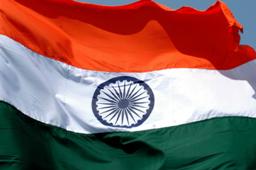 At the outset of the year 2013, India’s worsening macroeconomic parameters are a major cause of concern.
At the outset of the year 2013, India’s worsening macroeconomic parameters are a major cause of concern.
Latest data clearly showed that the current account deficit stood at a record level and the economic growth was stuck at a three year-low in the second quarter of the current financial year.
Besides, the Centre's fiscal deficit is poised to breach even the revised target in 2012-13 and industrial production is giving confusing pointers to economic growth.
As policy makers eagerly looked for signs of bottoming out, economists think there might be only a moderate improvement in the macroeconomic figures in the last quarter of the current financial year.
However, there is almost a unanimity that the Centre might not be able to control its fiscal deficit at the targeted level in 2012-13.
By November of 2012-13, the Centre's fiscal deficit was 80.4 percent of the Budget estimates (5.1 per cent of GDP).
If Budget projections of 14 per cent growth in nominal GDP is taken as correct, the deficit would account for 77 per cent of the revised target (5.3 per cent of GDP).
Remember, any downward revision in GDP numbers would magnify the fiscal deficit at a given level as a proportion of GDP.
The government had decided to rein in the fiscal deficit by allowing retailers to marginally raise the diesel prices every month, and to raise Rs 30,000 crore (Rs 300 billion) through disinvestment.
Finance Minister P Chidambaram had already stated that he is not counting on subsidies reduction because of diesel price corrections.
The government has so far raised close to Rs 7,000 crore (Rs 70 billion) from the stake sale in the public sector units.
“It is hard to estimate what the fiscal deficit would be at the end of this fiscal year, but it is likely to be 5.5 to 5.6 percent of the GDP.” said Soumya Kanti Ghosh, the director and head of economic affairs and research at Federation of Indian Chambers of Commerce and Industry.
In 2011-12, the fiscal deficit widened to 5.7 per cent of GDP against 4.6 per cent estimated in the Budget. Some economists, however think that the government should cut its expenses everywhere possible to rein in the fiscal deficit.
“The government should sharply cut expenses in order to control the fiscal deficit," said Ajay Shah, a Professor at the National Institute for Public Finance and Policy.
Economists believe that the current account deficit is more of a problem than the fiscal deficit, and advocate raising the import duties on gold to narrow the CAD.
The CAD in the June-September quarter of 2012-13 was at an all time high of 5.4 per cent of the GDP.
Though CAD is a bigger issue than the fiscal deficit because India does not have control over the global situation, CAD has not turned as alarming as it was in the 1991 balance of payments crisis due to capital inflows, felt economists.
Madan Sabnavis, chief economist, CARE ratings said, “In 1991, we had a current account deficit of 3 per cent of the GDP, and that resulted in a crisis.
“It is not likely to result in a crisis in 2013 because of the huge capital inflows. At the end of the year, the CAD is likely to come down to 4.5 percent of the GDP.”
There is a moderate improvement on the inflation front, but that is restricted to the wholesale-price inflation only.
The wholesale price inflation stood at its lowest in three years in December at 7.18 per cent compared to 7.24 per cent in November.
On the other hand, the consumer-price inflation which pinches the common man more, rose to a record of 10.56 per cent against 9.9 per cent in November.
This has dampened the earlier widely held expectations that the Reserve Bank of India would go for a rate cut in its January 29
Any rate cut, if happens, will not be sharp, economists said.
RBI governor D Subbarao recently said that a monetary stimulus was unlikely.
Arun Singh, Senior Economist, Dun and Bradstreet said, "The manufactured articles inflation has come down in December to 4.24 per cent.
“This is a good sign. But, the primary article inflation is still at a high level, and this is a cause for worry.”
Ajay Shah too thinks that the RBI is not likely to cut the interest rates in January because the economy has not seen price stability yet.
“The job of the central bank is to deliver price stability,” he said.
Anis Chakravarty, an economist with Deloitte said the diesel price hike will raise prices, but what is likely to happen will be offset by the monetary policy decisions of the RBI.
“At the end of this fiscal year, the inflation numbers are likely to remain at 7 to 7.2 per cent.”, he said.
However, Ghosh held a different view.
He said because the RBI is likely to cut the interest rates by 50 basis points in the January 29 policy review, the IIP numbers are likely to be better in the final quarter of the fiscal year 2012-2013.
The industrial production had contracted by 0.1 percent in the month of November, though it had registered an 8.2 per cent growth in October.
At the outset, it seemed to be volatile data that the Index of Industrial Production has always been accused of, but this has always been a trend in pre-Diwali and post-Diwali months.
“We might be able to achieve a growth rate of 5.5 per cent for this fiscal year in the IIP numbers.” Ghosh said.
Industrial production grew by just one per cent in the first eight months of the current financial year against 3.8 per cent in the corresponding period of last fiscal.
However, others believe that prospects for a strong revival in growth are bleak in the last quarter of this fiscal year.
The slow growth of the economy is attributed to the slowdown in the United States, the Euro Zone crisis and the declining business sentiments in India.
The Indian economy grew 5.4 per cent in the first half of the current financial year against 7.3 per cent in the corresponding period of the previous fiscal.
This happened since the second quarter yielded just 5.3 per cent growth, which was same as in the fourth quarter of 2011-12, a three-year low.
In between, the economy showed a better performance by registering a growth of 5.5 per cent in the first quarter of 2012-13. However, that higher growth could not sustain in the second quarter.
The Finance Ministry now expects the economy to expand by 5.7-5.9 per cent in the entire 2012-13. For this to happen, the economy needs to grow by 6.1-6.3 per cent in the second half, which seems to be a distant dream as of now.
The World Bank, on the other hand, pegged India's economic growth at 5.4 per cent for this fiscal, which means that the economy will expand in the second half at almost the same pace as in the first six months.
It should be noted here that both the Finance Ministry's estimates of 5.7-5.9 per cent growth and the World Bank's projections of 5.4 per cent expansion would mean that the Indian economy will witness a decade low growth.
In 2011-12, the economy grew at a nine-year low of 6.5 per cent. So, any growth less than that would be a ten-year bottom growth.
Even in the global financial crisis period of 2008-09, the economy grew by a higher rate - 6.7 per cent.
Shah finds that macro economic parameters are not likely to improve much in the last quarter of the current financial year.












 © 2025
© 2025